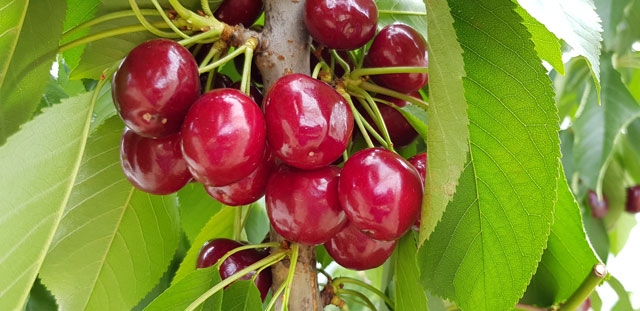The Australian cherry season was on track to be one of the biggest ever harvested, until Cyclone Owen spun some rain cells around the country.
Over a few days in December, isolated pockets of rain—and some very heavy downpours—fell in various parts of the country, including some cherry growing regions.
Over 200 mm fell in some parts of north-east Victoria, cutting the Hume Highway and washing bridges from local roads.
Rain can cause cherries to split, and some varieties are more susceptible to rain damage than others.
NZ also got very wet
Cherry growers in New Zealand have also had more rain than required as their cherry season began. Some areas in the South Island had the most rain during the cherry season for ten years.
Moving water off the fruit
Larger orchards use the wind generated by helicopters to remove water from cherries, to stop fruit from cracking.
Smaller growers can use airblast sprayers—not to spray the trees, but to blow water off the fruit and out of the depression where the stem connects.
Ready supply of fruit this season
Some cherry regions have almost finished harvest, others are just starting, such is the climatic variation of production areas.
It is important to point out that cherries domestically are still likely to be readily available during the festive season and well into the New Year.
Good exports to new markets
New export markets were open prior to the rain and exports were moving freely.
However, there has been some delay to the flow of export fruit as minor quality issues have crept in thanks to the rain. Harvest for export will resume as soon as the trees and the soil dry properly.
Largest every harvest?
Only time will tell if this was the largest sweet cherry harvest in Australia.
It might still be, as cherries grow that extra millimetre or two in size and gain a little extra weight.
One thing is for sure, every year is different.
See this article in Tree Fruit Dec 2018






















